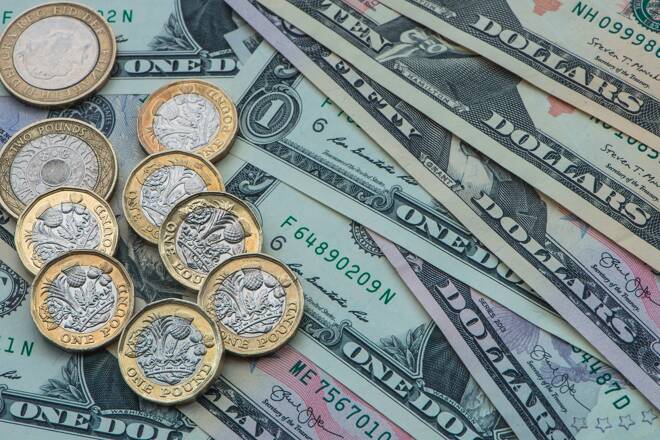Advertisement
Advertisement
GBP to USD Forecast: Pound Recovery Threatened by UK Recession Risks
By:
US economic indicators, including consumer confidence and job openings, will significantly influence the GBP/USD levels amidst a hawkish Federal Reserve policy outlook.
Highlights
- The GBP/USD pair gained 0.19% on Monday, reversing a 0.18% decline from Friday, ending the day at $1.26010.
- Monetary policy divergence this week will hinge on US economic indicators and BoE chatter.
- Today, US consumer confidence and JOLTs job openings are the key indicators to watch for GBP/USD movement.
The Monday Overview
The GBP to USD gained 0.19% on Monday. Reversing a 0.18% decline from Friday, the GBP to USD ended the day at $1.26010. A positive start to the session saw the GBP/USD rise to a high of $1.26109 before falling to a low of $1.25653.
A GBP/USD Return to $1.27 Hinges on Economic Sentiment
Hawkish BoE commentary from the weekend continued to resonate this morning. Bank of England Deputy Governor Ben Broadbent warned of an extended period of restrictive monetary policy to tame inflation.
However, a higher-for-longer interest rate outlook leaves the UK economy at risk of an economic recession. The risk of a UK recession continues to peg the GBP/USD pair back from a return to $1.27.
This week, monetary policy divergence will hinge on US economic indicators. With UK economic indicators limited to finalized UK manufacturing PMI numbers, BoE chatter will need consideration.
However, investors must wait until Thursday for BoE Chief Economist Huw Pill to move the dial. Wage growth remains a UK bugbear that could keep the BoE on target for further rate hikes despite the risk to the UK economy.
No BoE Monetary Policy Committee Members are on the calendar to speak today.
US Economic Indicators to Test GBP to USD Levels
While the UK economic calendar is light, US economic indicators will move the dial today.
US consumer confidence and JOLTs job openings will draw interest. We expect both numbers to influence. An unexpected pickup in consumer confidence and an increase in job openings would support a more hawkish Fed policy outlook.
Tighter labor market conditions would fuel wage growth and consumption. An upward trend in consumer confidence and wage growth would fuel bets on the Fed to tackle wage growth to curb consumer confidence and consumption. Weaker consumer confidence translates to a pullback in consumption and softer demand-driven inflationary pressures.
Economists forecast the CB Consumer Confidence Index to fall from 117.0 to 116.0 and job openings to decline from 9.582 million to 9.465 million.
Beyond the numbers, FOMC member commentary also needs consideration. It is a big week for the dollar, with core PCE price index and personal spending numbers out ahead of the US Jobs Report.
GBP to USD Price Action
Daily Chart
The Daily Chart showed the GBP to USD above the $1.2520 – $1.2440 support band. Hawkish BoE commentary and falling US Treasury Yields led to a return to $1.26. However, UK recessionary risks and the threat of further Fed rate hikes leave the GBP/USD short of the $1.27 handle and the 50-day EMA.
Considering the 14-Daily RSI at 40.01, the GBP/USD pair has more room to fall before hitting oversold territory. Hotter-than-expected US economic indicators would bring the $1.2520 – $1.2440 support band and the 200-day EMA into view. A fall through the 200-day EMA would signal another leg down for the GBP/USD.
4-Hourly Chart
The 4-Hourly Chart affirms the bearish price signals. Hotter-than-expected US economic indicators would bring the $1.2520 – $1.2440 support band into play.
Considering the 14-4H RSI, the reading of 47.38 leaves room for a GBP/USD fall to sub-$1.2520 before hitting oversold territory. However, disappointing US economic indicators would support a breakout from the 50-day EMA to target $1.27 and the 200-day EMA.
About the Author
Bob Masonauthor
With over 28 years of experience in the financial industry, Bob has worked with various global rating agencies and multinational banks. Currently he is covering currencies, commodities, alternative asset classes and global equities, focusing mostly on European and Asian markets.
Advertisement
